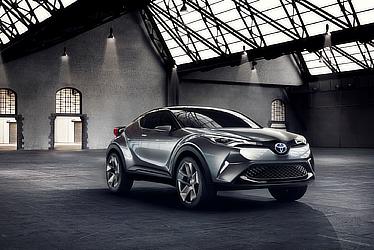Oct. 04, 2017
Toyota's Tokyo Motor Show History (1995 - 2015)
1995The 31st Tokyo Motor Show
The show became even more spectacular than before, thanks not only to the efforts of the exhibitors but also to improved event management, including the relaxation of exhibition rules.
As part of its concrete vision for the future, Toyota exhibited many unique and innovative cars designed to make people feel happier by maintaining a harmonious balance between people, society, and the earth.
The Prius, introduced at this show as the earth-friendly next-generation sedan that would bring comfort and happiness to people, gave visitors a glimpse of tomorrow's car. The open-top midship sports car MRJ was also unveiled, attracting keen attention from experienced drivers and car enthusiasts who visited the show.
As part of its "Forest of Toyota" project for conserving and growing forests, Toyota exhibited the Moguls, an experimental vehicle specifically designed to help tree planting and forest management. By displaying this vehicle, Toyota demonstrated its proactive efforts to conserve the environment.
At the technical exhibition corner, Toyota presented an outline of the innovative Intelligent Transport System (ITS), which was being studied and developed through an industry-government-academia partnership. Toyota also demonstrated the progress of its hybrid technology by exhibiting the Coaster Hybrid EV at the booth of the Japan Electric Vehicle Association.
| Theme | "Dream the Dream, a Car with That Feel" |
|---|---|
| Venue | Makuhari Messe (Nippon Convention Center) |
| Period | Oct. 27-Nov. 8 |
| No. of visitors | 1,523,300 |
| No. of exhibitors | 361 |
| Toyota exhibits | Prius, MRJ, FLV, Ipsum, Riente, Moguls, Fun Runner II, Coaster Hybrid EV, etc. |
| Toyota's theme | "A Touch of Happiness: Cars that Create New Joys" "Demonstrating the potential of cars to make people feel happy" |
1997The 32nd Tokyo Motor Show
After the 32nd event, the show was to be held separately for passenger cars and commercial-use vehicles. Although it was the last show in the old format, many new ideas to entertain visitors were introduced, including the corner entitled "Cars Featured in Memorable Movies."
Toyota emphasized its innovative and people-friendly approach to car-making for the 21st century that harmonized with society and the earth's environment.
To demonstrate its commitment to developing the ultimate eco-car, Toyota exhibited such vehicles as the world's first production hybrid car Prius, the E-COM electric commuter for two passengers, and the electric vehicle FCEV equipped with ethanol-based fuel cells.
| Theme | "One World. One People. One Show." |
|---|---|
| Venue | Makuhari Messe (Nippon Convention Center) |
| Period | Oct. 24-Nov. 5 |
| No. of visitors | 1,515,400 |
| No. of exhibitors | 337 |
| Toyota exhibits | Prius, E-COM, FCEV, NC250, Funtime, Fun Cargo, Fun Coupe, MR-S, Harrier, Grand Cruiser, etc. |
| Toyota's theme | "Action for Tomorrow" "Presenting the Prius, world's first production hybrid car" |
1999The 33rd Tokyo Motor Show (for passenger cars)
From this year on, the show alternately featured passenger cars (and motorcycles) in one year, and commercial-use vehicles in another. In the first show dedicated to passenger cars and motorcycles, visitors' attention was drawn to the environmental technologies presented by diverse exhibitors.
Toyota demonstrated the unlimited joy that cars could offer people, and emphasized its proactive commitment to the environment, safety, and the ITS (Intelligent Transport System).
Toyota's show cars included the mid-sized minivan HV-M4 with a newly developed hybrid system, the medium-sized Opa that featured a new design concept, and the playful WiLL Vi 4-door personal vehicle. At the same time, the Lexus Sports Coupe (SC) metal-top luxury convertible was exhibited as the first Lexus brand car in Japan.
At the technical exhibition corner, fuel cell car components and the newly developed THS-C+E-Four hybrid system were displayed. In addition, the presentation of the progress of the ITS, together with the vision of mobile society that it would enable, demonstrated Toyota's unique and diverse approach to the future.
| Theme | "Eye to the future. Changing vehicles for the earth." |
|---|---|
| Venue | Makuhari Messe (Nippon Convention Center) |
| Period | Oct. 22-Nov. 3 |
| No. of visitors | 1,386,400 |
| No. of exhibitors | 294 |
| Toyota exhibits |
|
| Toyota's theme | "See the Future in Our Cars" "Demonstrating how fun cars can be, and emphasizing Toyota's future-proof approach to development" |
2000The 34th Tokyo Motor Show (for commercial-use vehicles)
As the first show dedicated to commercial-use vehicles, the event featured a special symposium on IT and logistics, as well as other content focused on issues of transportation of goods and people.
Toyota, Hino, and Daihatsu―three companies that manufacture a full range of commercial-use vehicles ranging from small pickups to large trucks and buses―jointly demonstrated their approaches to the environment, the ITS, and welfare.
The three companies perceived the entire show as a forum for thinking about the relationship between commercial-use vehicles and personal/industrial activities. From the viewpoint of the environment, the companies presented advanced technologies including a hybrid system and DPNR (Diesel Particulate-NOx Reduction) common rail diesel engines. With regard to welfare, wheelchair-enabled and caregiver-friendly Welcabs were exhibited. The group companies also presented new IT-based ways of transporting goods and people in the 21st century, including a truck with advanced safety technologies and the next-generation transport management system based on the ITS technology. Toyota also presented a demonstration of the next-generation bus system called the IMTS (Intelligent Multi-mode Transit System), setting up a model bus stop at the venue.
Among the show cars exhibited, the Kluger V luxury sport wagon attracted particular attention from visitors.
| Theme | "Vehicle of Character Across the World, Building Our Future" |
|---|---|
| Venue | Makuhari Messe (Nippon Convention Center) |
| Period | Oct. 31-Nov. 4 |
| No. of visitors | 1,770,900 |
| No. of exhibitors | 133 |
| Toyota exhibits | Kluger V, Land Cruiser, Hilux Sports Pickup, VF130, etc. |
| Toyota's theme | "Transportation of Goods and People in the 21st Century" "Joint presentation by Toyota, Hino, and Daihatsu demonstrated solidarity of the group" |
2001The 35th Tokyo Motor Show (for passenger cars)
The first passenger car/motorcycle show of the 21st century featured a wide variety of eye-catching concept cars that focused on the environment, safety, and IT.
Toyota presented its innovative efforts at technology development and demonstrated the essential appeal of automobiles―the joy of driving and the delight of utility.
Two fuel cell-based hybrid cars were exhibited, including the ultra fuel-efficient ES3, demonstrating the superiority of Toyota's environmental technology. The show cars including the sporty FXS and RSC, and the network-enabled Pod and WiLL VC proved popular among visitors.
| Theme | "Open the Door! The Automobile's Bright Future" |
|---|---|
| Venue | Makuhari Messe (Nippon Convention Center) |
| Period | Oct. 26-Nov. 7 |
| No. of visitors | 1,276,900 |
| No. of exhibitors | 281 |
| Toyota exhibits | ES3, FCHV-4, FCHV-5, FXS, RSC, Pod, Ist, Volts, WiLL VC, etc. |
| Toyota's theme | "New Mobility Life Filled with Dreams" "Presenting dream-inspiring cars at the forefront of the network age" |
2002The 36th Tokyo Motor Show (for commercial-use vehicles)
Reflecting such social issues as the tightening of environmental regulations and the aging population, the exhibits featured the latest environmental technologies, the next-generation transportation based on the ITS, and new vehicles for the physically challenged and caregivers.
The three companies (Toyota, Hino, Daihatsu)―manufacturers of a full range of commercial-use vehicles ranging from small pickups to large trucks and buses―jointly presented their efforts in the fields of the environment, welfare, and ITS under the theme of Friendliness to People and the Environment.
The three companies exhibited a number of concept cars, including the FCHV-BUS2 (a large fuel cell hybrid bus jointly developed by Toyota and Hino) featuring clean emission and CO2 reduction, and the small ultra-low-floor bus Flappo based on the "universal design" concept. In addition, a truck with advanced safety vehicle (ASV) technology and the next-generation transport management system based on the ITS technology were exhibited, indicating the future model for transporting goods and people.
Various types of Welcabs were also displayed to demonstrate the companies' commitment to this category of vehicles. In addition, new commercial-use vehicles including the Succeed Bio Florist (specially customized for use by florists) and the Probox Snow Boarder (customized for snowboarders) were exhibited.
| Theme | "Sense the Evolution - Commercial Vehicles on Stage" |
|---|---|
| Venue | Makuhari Messe (Nippon Convention Center) |
| Period | Oct. 29-Nov. 3 |
| No. of visitors | 211,100 |
| No. of exhibitors | 110 |
| Toyota exhibits | FCHV-BUS2, Flappo, Probox Snow Boarder, Succeed Bio Florist, ALSV, Wish, etc. |
| Toyota's theme | "Friendliness to People and the Environment" "Joint exhibition with Hino and Daihatsu under the common theme of Friendliness to People and the Environment" |
2003The 37th Tokyo Motor Show (for passenger cars)
Featuring hands-on experience including passenger test rides on clean energy vehicles, the show evolved from a spectator show into a participatory event.
Toyota demonstrated its consideration for people and the environment together with the essential appeal of automobiles―the joy of driving and the delight of utility. Specifically, the improved environmental and driving performance of the advanced hybrid system was presented, along with Toyota's efforts to answer foreseeable social needs through proactive car-making. The show cars included concept hybrid cars, such as the Fine-N that featured a fuel cell hybrid system, as well as the CS&S and the SU-HV1. The personal mobility 1-seater PM also captivated visitors with its cute styling and attractive performance.
This was also the first year when Toyota presented the Lexus brand at a separate booth. Under the theme, "In Pursuit of the Essence of Luxury," the LF-S next-generation premium sedan and the LF-X concept sport utility vehicle were displayed, attracting keen attention from visitors.
| Theme | "The Challenge: Driving Toward A Better Future" |
|---|---|
| Venue | Makuhari Messe (Nippon Convention Center) |
| Period | Oct. 24-Nov. 5 |
| No. of visitors | 1,420,400 |
| No. of exhibitors | 268 |
| Toyota exhibits |
|
| Toyota's theme | "Ecology and Emotion" "Exhibiting Lexus brand cars at a separate booth prior to start of domestic marketing" |
2004The 38th Tokyo Motor Show (for commercial-use vehicles)
This was the last show dedicated to commercial-use vehicles. Exhibits included commercial and welfare vehicles that are friendly to people and the earth, featuring the latest environmental and safety technologies.
Toyota suggested a wide variety of uses for commercial vehicles including business and pleasure, and displayed the advancements of its environmental technology. With regards to welfare vehicles, Toyota demonstrated its response to social needs through vehicles that provided comfort and mobility to the elderly and the handicapped.
Toyota also exhibited fun-filled show cars, including the Hiace Sound Satellite―a special version of the new Hiace customized as a mobile sound studio capable of supporting various businesses in an enjoyable manner―and the Regius Ace My Kart Factory, which was a customized version of the new Regius Ace designed to carry racing karts and to support race-watching.
Also exhibited were many welfare vehicles on the market, including the Welcab Concept, a new welfare vehicle that enabled those with disabilities to board and exit without assistance.
The Intelligent Multimode Transit System (IMTS), the next-generation public transit system that was to be adopted at the 2005 World Exposition, Aichi, was also unveiled at this show, drawing a crowd of visitors.
| Theme | "Vehicles for People. Vehicles as Partner." |
|---|---|
| Venue | Makuhari Messe (Nippon Convention Center) |
| Period | Nov. 2-7 |
| No. of visitors | 248,600 |
| No. of exhibitors | 113 |
| Toyota exhibits | Hiace Sound Satellite, Regius Ace My Kart Factory, Welcab Concept, Future Truck Concept, PM, etc. |
| Toyota's theme | "Ecology and Emotion" "Projecting the bright future of commercial and welfare vehicles focusing on Ecology and Emotion" |
2005The 39th Tokyo Motor Show (for passenger cars)
Marking the 50th year since the first Tokyo Motor Show, the event featured many world premieres as well as advanced environmental and safety technologies.
Toyota's presentation emphasized the company's car-making efforts that combined the consideration for the environment with the essential appeal of automobiles, including the joy of driving and the delight of utility.
The Toyota-brand show cars included the new concept fuel cell hybrid car Fine-X, the new-generation hybrid minivan Estima Hybrid Concept, and the i-swing personal mobility unit that came close to a wearable vehicle.
The Lexus brand, which aimed to become the global premium brand for the 21st century, exhibited the LF-Sh concept car of the flagship Lexus LS. Only the image of headlamps had been pre-released as a teaser before the car was unveiled on the first press day, attracting considerable attention from visitors and others.
| Theme | "Driving Tomorrow!" from Tokyo―Brand-new Proposals to Automobile: Our dream Comes Alive. |
|---|---|
| Venue | Makuhari Messe (Nippon Convention Center) |
| Period | Oct. 21-Nov. 6 |
| No. of visitors | 1,512,100 |
| No. of exhibitors | 239 |
| Toyota exhibits |
|
| Toyota's theme | "Ecology and Emotion" "Demonstrating Toyota's commitment to ecology and pursuit of attractive cars" |
2007The 40th Tokyo Motor Show
The passenger cars & motor cycle show and the commercial-use vehicle show that had been held separately in alternate years were newly integrated as a comprehensive show covering auto parts and related products as well.
Toyota's presentations demonstrated the company's environmental commitment to Sustainable Mobility, while the show cars represented the joy of driving and the delight of utility. The Toyota brand show cars included the environment-friendly concept car 1/X which revolutionized the design of a car from the viewpoint of Sustainable Mobility, the i-Real personal mobility vehicle that one could control easily like a part of the body, and the ultra-efficiently packaged iQ Concept Car that challenged the accepted wisdom of car-making, all of which attracted visitors' attention.
The Lexus-brand show cars included the LF-Xh specialty hybrid SUV that embodied the brand's design philosophy of L-finesse, and the LF-A premium sport 2-seater that symbolized the emotional appeal of the Lexus's performance.
| Theme | "Catch the News, Touch the Future" |
|---|---|
| Venue | Makuhari Messe (Nippon Convention Center) |
| Period | Oct. 26-Nov. 11 |
| No. of visitors | 1,425,800 |
| No. of exhibitors | 241 |
| Toyota exhibits |
|
| Toyota's theme | "Harmonious Drive: Moving with People and the Earth toward a New Tomorrow" "Presenting corporate commitment to realize Sustainable Mobility" |
2009The 41st Tokyo Motor Show
In order to emphasize the fun elements of cars in addition to the ongoing concern for the environment, Toyota exhibited such models as the FT-86 Concept (a front-engine, rear-wheel-drive sports vehicle) and the LFA premium sports model, which embodied the joy of driving and the pleasure of ownership-the fundamental appeal of motor vehicles.
To showcase Toyota's CO2 emission control and energy diversification measures, the company also presented the Prius Plug-in Hybrid Concept and the FT-EV II small electric vehicle (suited to short-distance driving), demonstrating Toyota's response to environmental concerns that was going far beyond regular hybrids. At the technical exhibition corner, Toyota's hybrid systems used in three generations of Prius were displayed to trace the evolution of hybrid technology.
| Theme | "Fun Driving for Us, Eco Driving for Earth" |
|---|---|
| Venue | Makuhari Messe (Nippon Convention Center) |
| Period | Oct. 23-Nov. 4 |
| No. of visitors | 614,400 |
| No. of exhibitors | 108 |
| Toyota exhibits |
|
2011The 42nd Tokyo Motor Show
Twenty-four years after moving to Makuhari, Chiba, the Tokyo Motor Show returned to Tokyo this year to live up to its name. The 2011 show constantly attracted over 60,000 visitors per day, with families adding to the number on weekends.
Among the vehicles Toyota presented were the futuristic Toyota Fun-Vii concept car―which embodied the close relationship between people, motorcars, and society―and the compact "86" front-engine, rear-wheel-drive sports car that was designed to reawaken the innate pleasure of driving/owning a car. Toyota also exhibited a variety of next-generation environment-friendly cars, including the Prius Plug-in Hybrid that featured dramatic CO2 reduction and multiple power sources in a bid to become the future mainstream of eco cars. Visitors could also test-ride some of the exhibited vehicles at Toyota's MEGA WEB theme park located nearby.
The show also featured Smart Mobility City 2011, an event held by the Japan Automobile Manufacturers Association, Inc. under the theme, "The Future for Humans, Automobiles and Cities Brought About by Cutting-Edge Technologies in Information, Environment and Energy." The Toyota booth portrayed the near-future society in which motorcars and society would be closely interwoven, with plug-in hybrids and electric vehicles enabling efficient power management at home and the Intelligent Transport System (ITS) ensuring safe and convenient transportation.
| Theme | "Mobility can change the world" |
|---|---|
| Venue | Tokyo Big Sight |
| Period | Dec. 2-11 |
| No. of visitors | 842,600 |
| No. of exhibitors | 35 |
| Toyota exhibits |
|
| Toyota's theme | "FUN TO DRIVE, AGAIN." Rekindling the dream and joy of automobiles to build a better future |
2013The 43rd Tokyo Motor Show
Toyota Motor Corporation will display five world-premiere concept vehicles in its Toyota exhibit at the 43rd Tokyo Motor Show. The show, to be held at Tokyo Big Sight in Koto Ward, Tokyo, will run from November 20 to December 1. Under the slogan "Fun to Drive, Again," the concept vehicles convey Toyota's vision of a future mobility society that values the joy of driving. The vehicles on display embody Toyota's efforts to contribute positively to society while creating ever-better cars that exceed expectations.
The Toyota display will include a concept version of the fuel cell vehicle scheduled for launch around 2015, as well as a next-generation taxi designed with usability and hospitality in mind and a concept car that connects with its driver in an easy-to-use, intuitive manner.
The booth will also feature the "Aqua G Sports" compact sports hybrid, the "Toyota i-Road," a personal mobility vehicle which made its world debut at the Geneva Motor Show in March this year, and the "FT-86 Open concept", a rear-wheel-drive sports convertible.
| Theme | "Compete! And shape a new future." |
|---|---|
| Venue | Tokyo Big Sight |
| Period | Nov. 23-Dec. 1 |
| No. of visitors | 902,800 |
| No. of exhibitors | 178 |
| Toyota exhibits | Toyota FCV Concept, Toyota FV2, JPN Taxi Concept, Voxy Concept and Noah Concept, Aqua G Sports, Toyota i-Road, FT-86 Open concept, etc. |
| Toyota's theme | "FUN TO DRIVE, AGAIN." |
2015The 44th Tokyo Motor Show
Toyota will present its vision for the future of mobility at this year's Tokyo Motor Show, where three very different new concept cars will be revealed. While some of the vehicles slated to go on display represent the development and commercialization of groundbreaking new technologies, others seek to explore and strengthen the emotional bond between car and driver.
Toyota's commitment to advanced powertrain technology will be represented by three models: the all-new Prius, the Toyota C-HR Concept, a compact hybrid crossover, and the Toyota FCV Plus, a fuel cell concept that embodies Toyota's vision of a hydrogen-based society.
While the above vehicles represent the ever-changing nature of mobility, Toyota will also show two concepts created to reaffirm the fundamental relationship between car and driver: the Toyota S-FR, a fun-to-drive entry-level lightweight sports car, and the Toyota KIKAI, a design concept that reminds us of the innate beauty of machinery.
| Theme | "Your heart will race." |
|---|---|
| Venue | Tokyo Big Sight |
| Period | Oct. 29-Nov. 8 |
| No. of visitors | 812,500 |
| No. of exhibitors | 160 |
| Toyota exhibits | Prius, Toyota C-HR Concept, Toyota S-FR, Toyota FCV Plus, Mirai Toyota KIKAI, Kirobo Mini, YARIS WRC Test car, Land Cruiser, G's AQUA, G's PRIUS α, G's Vitz, G's MARK X, G's HARRIER, etc. |




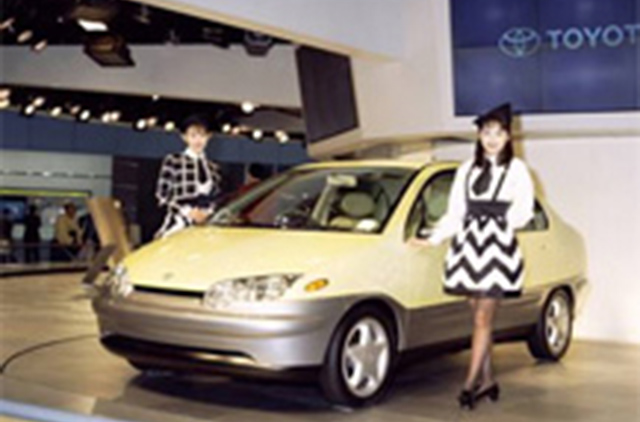
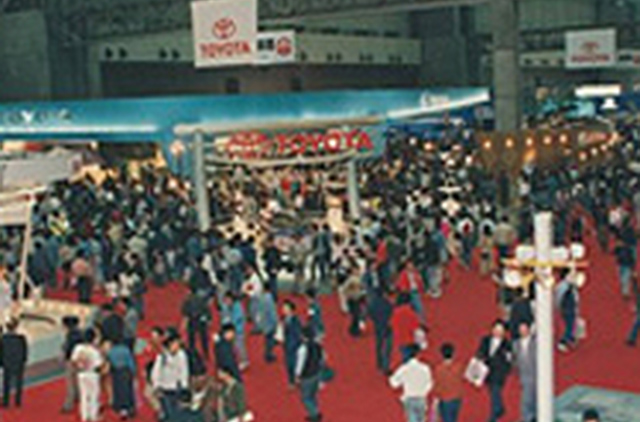
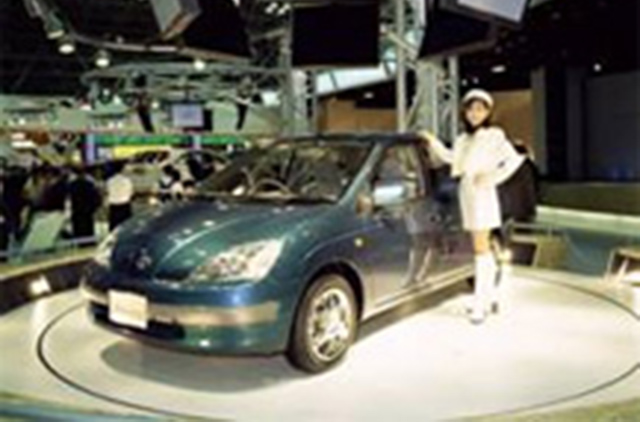
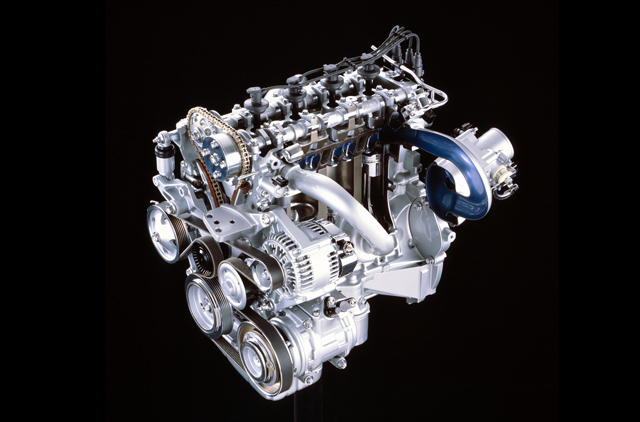
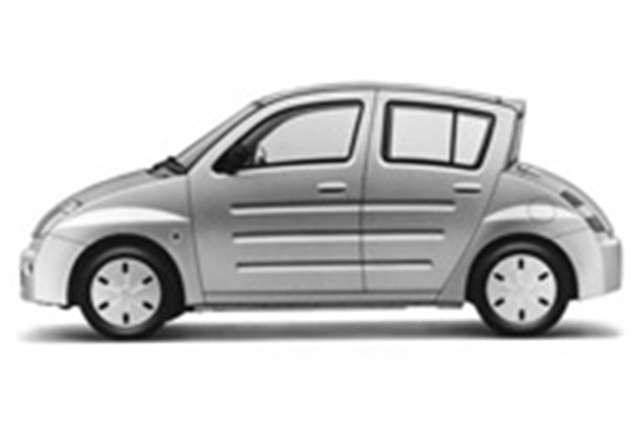
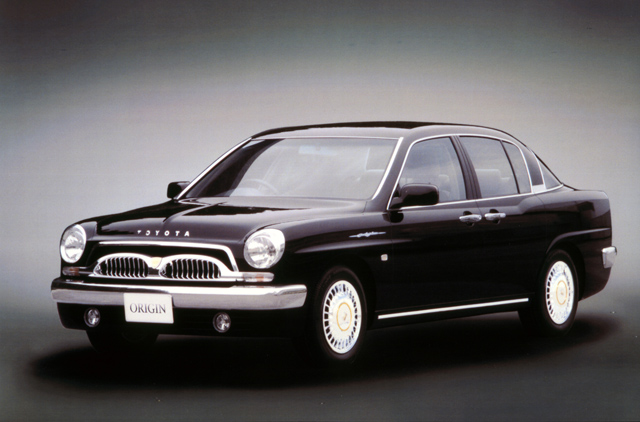

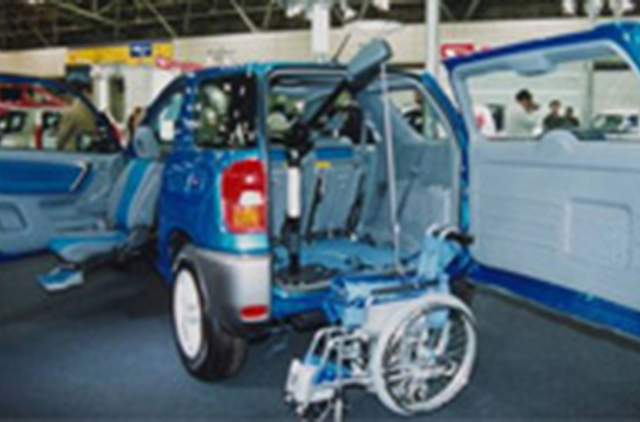

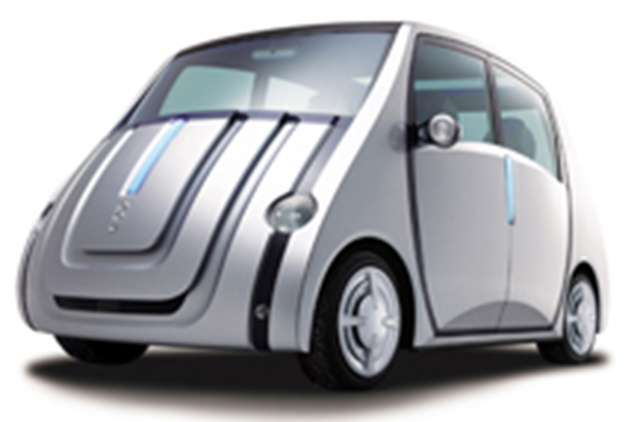
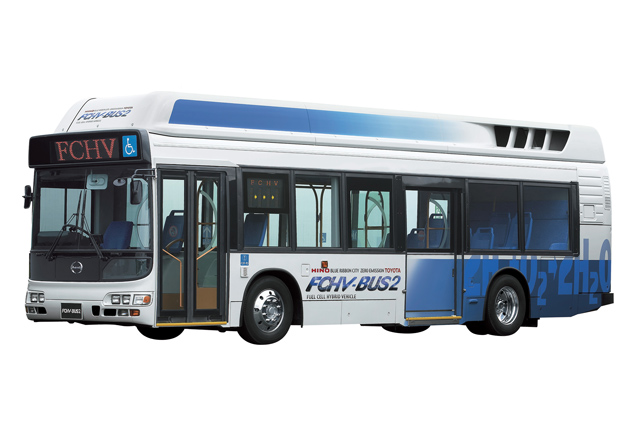

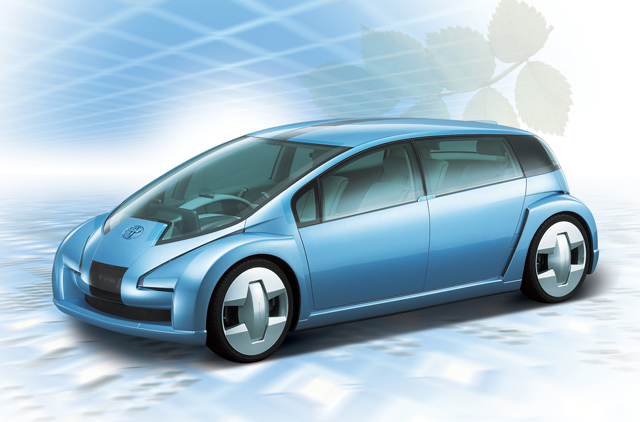
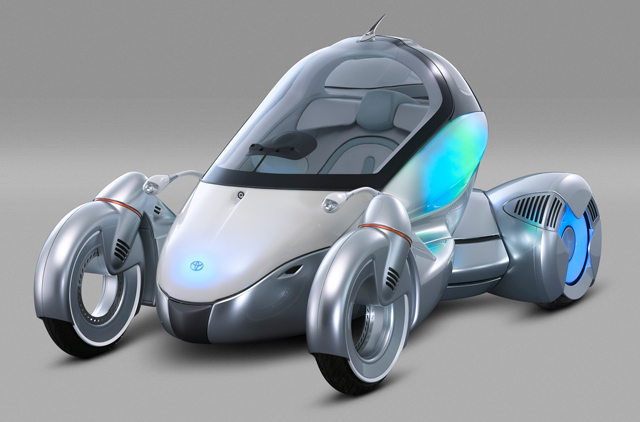
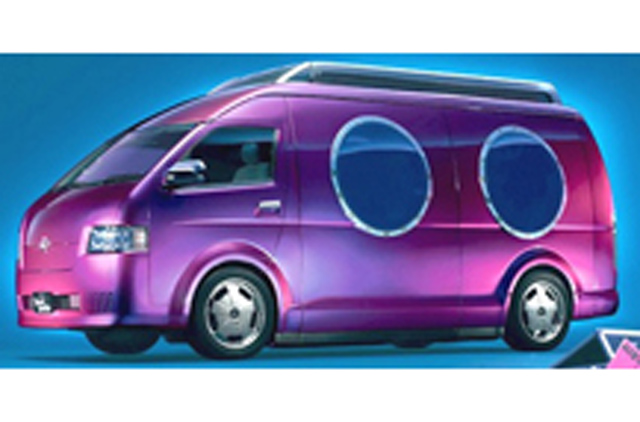
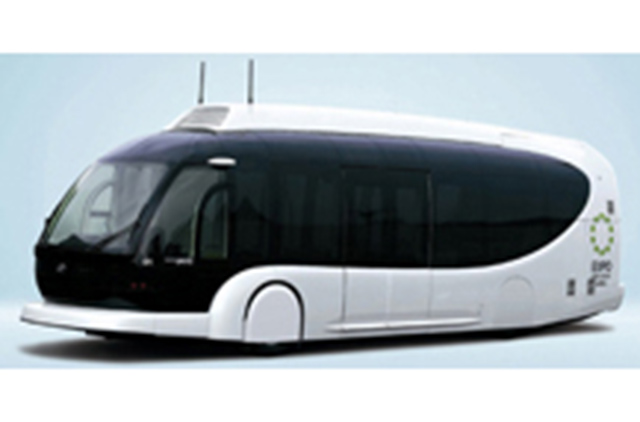
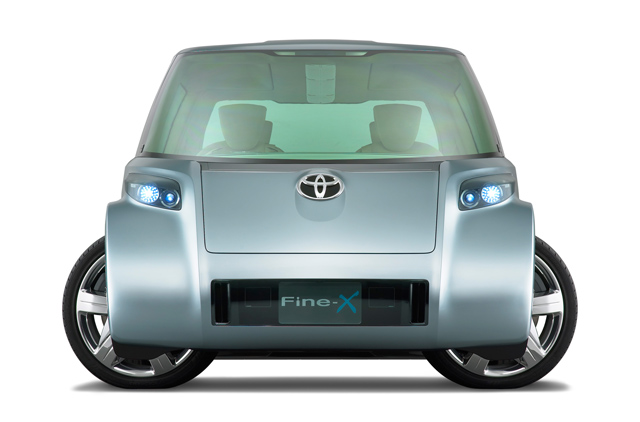
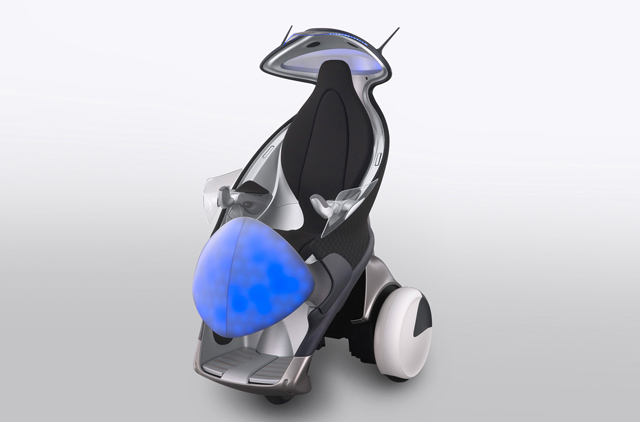
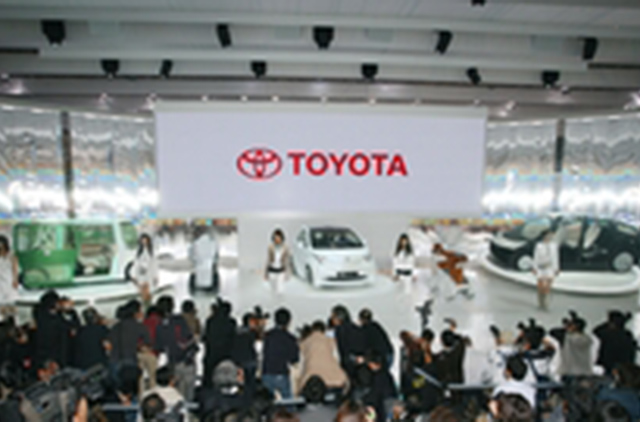


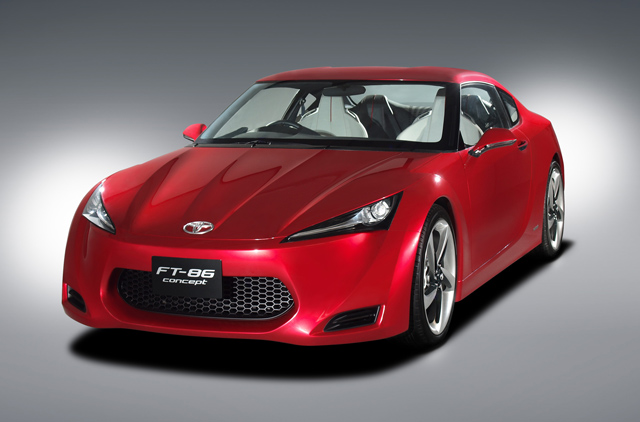

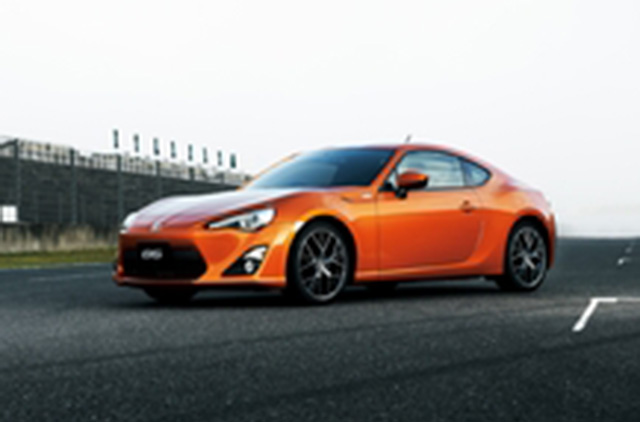

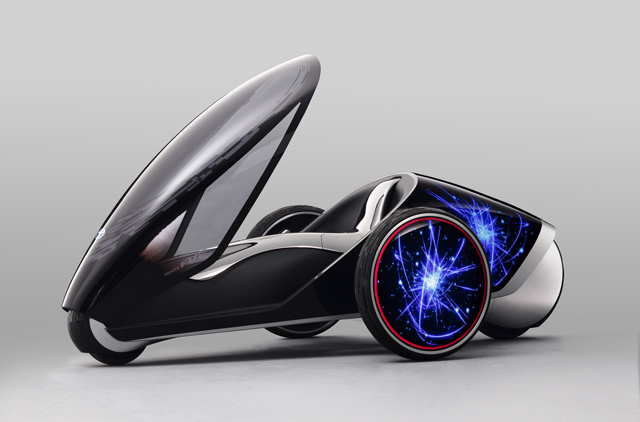
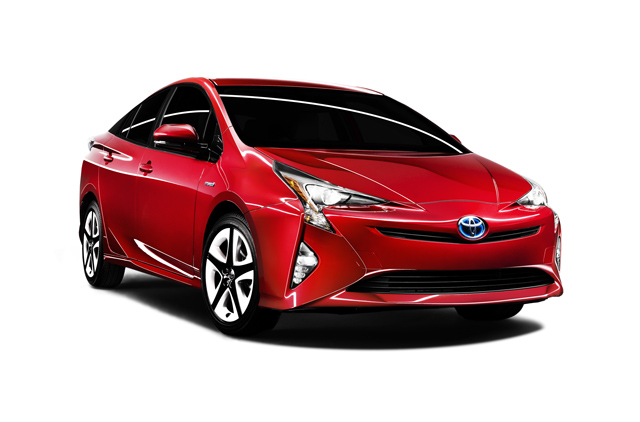
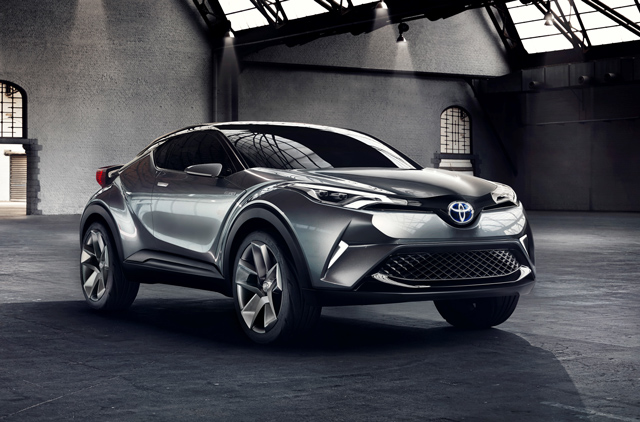
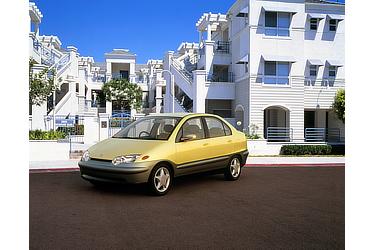
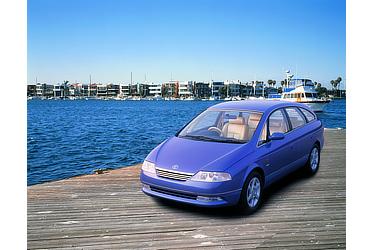
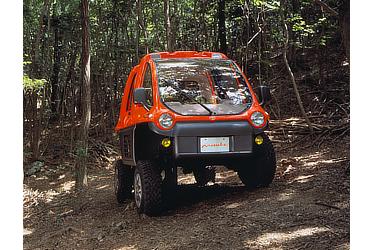

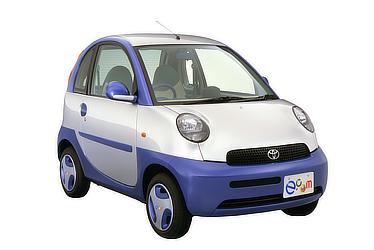
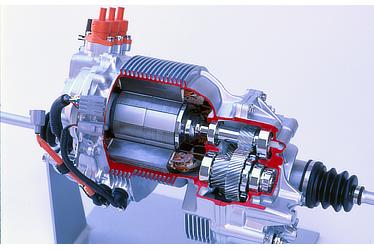

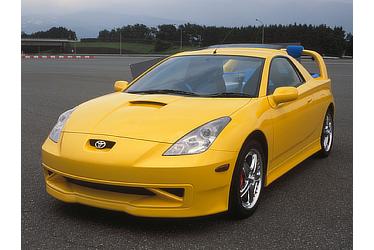


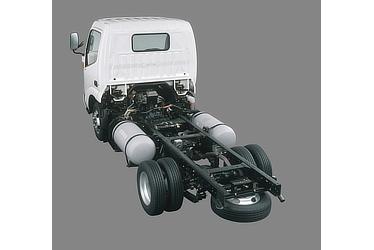
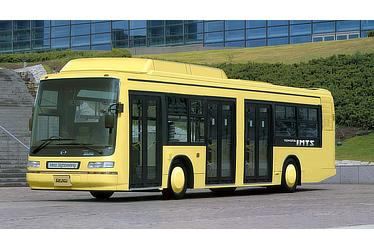
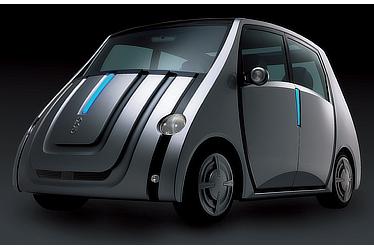
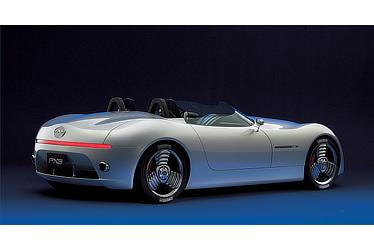
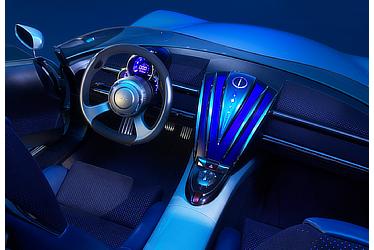
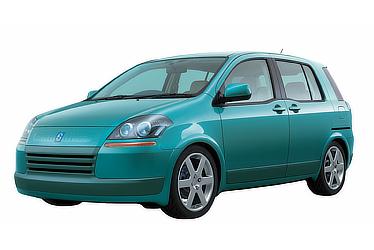


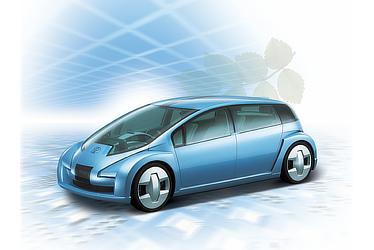
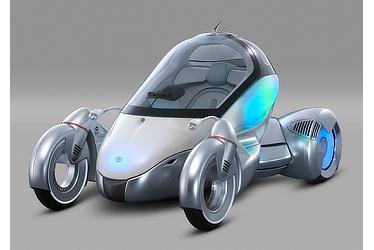

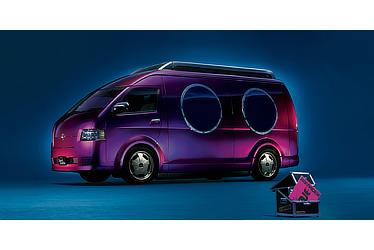
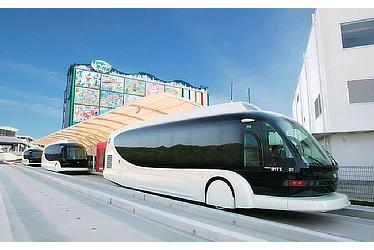
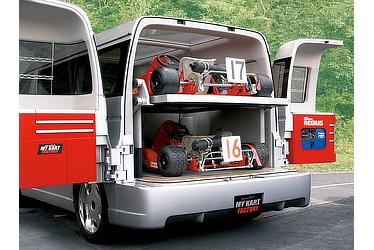

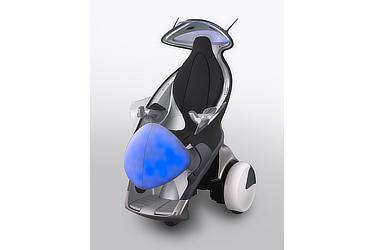

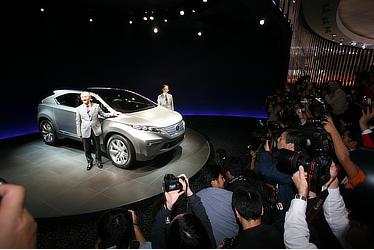
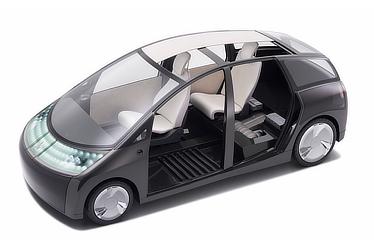

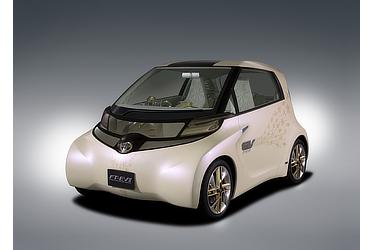
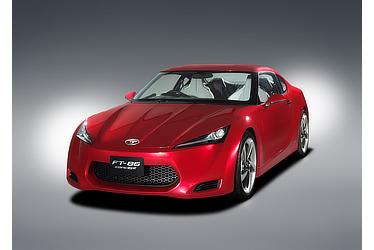
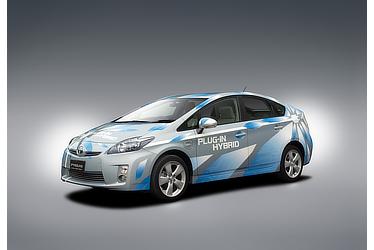

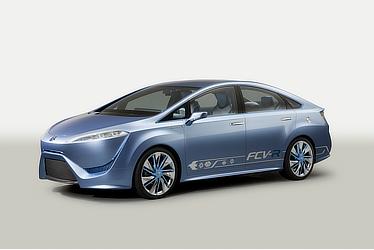
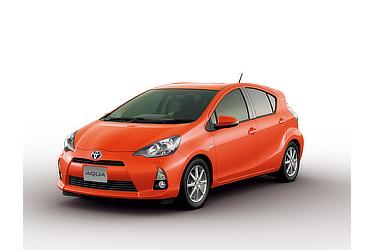

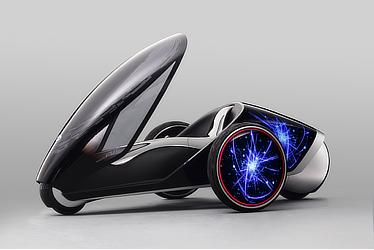
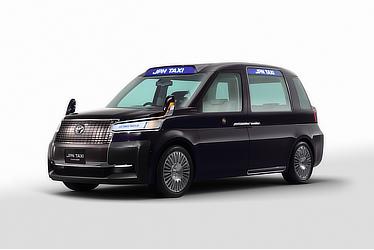
_001_W374_H250.jpg)
